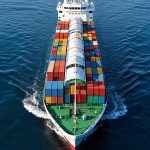Introduction
As global air traffic rebounds to pre-pandemic levels—projected at 4.7 billion passengers in 2024—the aviation industry faces a existential dilemma. Despite improved fuel efficiency, commercial flights still account for 2.5% of global CO₂ emissions, a figure set to triple by 2050 under business-as-usual scenarios. Enter Sustainable Aviation Fuels (SAF), the sector’s great decarbonization hope. Ranging from recycled cooking oil to hydrogen-based e-fuels, SAF could reduce lifecycle emissions by 80%. But with current production meeting just 0.1% of demand, can this nascent industry scale sustainably? This investigation uncovers the scientific breakthroughs, corporate power plays, and geopolitical tensions shaping aviation’s clean energy transition.
1. SAF 101: The Seven Approved Production Pathways
1.1 Biomass-Based Routes (ASTM D7566 Standards)
| Pathway | Feedstock | Carbon Reduction | Current Cost/Gallon |
|---|---|---|---|
| HEFA | Used cooking oil, animal fat | 75–90% | 5.20–5.20–6.80 |
| FT-SPK | Agricultural residues | 70–95% | 7.10–7.10–8.50 |
| ATJ | Sugarcane, corn starch | 65–85% | 8.90–8.90–10.40 |
Dominant Player: Neste’s Singapore refinery produces 1 million tons/year of HEFA-SAF, supplying 40% of global output.
1.2 Synthetic E-Fuels: The Hydrogen Frontier
Electrofuels (e-SAF) combine green hydrogen with captured CO₂ via Fischer-Tropsch synthesis:
- Porsche’s Haru Oni Plant (Chile): Uses Patagonian wind power to produce 130,000 liters/year of e-SAF at 45/gallon(2030target:45/gallon(2030target:7/gallon).
- Lufthansa’s Nordic Blue Crude: Partners with Equinor to build a 100 MW e-SAF facility powered by Norwegian hydropower.
Key Challenge: Green hydrogen production requires 50 MWh/ton—equivalent to 20,000 km² of solar farms to meet 2050 demand.
2. The Feedstock Wars: From Frying Pans to Algae Farms
2.1 First-Generation Controversies
- Palm Oil Paradox: Malaysia’s SAF ambitions clash with EU deforestation laws. Neste’s palm oil-based SAF faces 34% import tariffs.
- Food vs. Fuel: Using U.S. soybean oil for SAF could raise global food prices by 12% (World Bank 2023 report).
2.2 Next-Gen Feedstock Innovations
- Algae Biofuels: ExxonMobil’s engineered algae strains yield 5,000 liters/acre/year (10x palm oil’s efficiency).
- Municipal Waste: Fulcrum BioEnergy’s Nevada plant converts garbage into 11 million gallons/year of SAF.
- Atmospheric CO₂: Swiss startup Synhelion uses solar thermal towers to capture CO₂ at 230/ton(vs.230/ton(vs.600 industry average).
3. The Engine Compatibility Conundrum
3.1 Blend Wall Limitations
Current jet engines can only handle:
- 50% SAF blends (certified for all aircraft)
- 100% SAF requires modified combustion systems (Rolls-Royce testing with Virgin Atlantic).
Breakthrough: Airbus’ ZEROe concept engine (2035 debut) will run on 100% e-SAF with 30% lower fuel burn.
3.2 The Cold Soak Problem
Bio-SAF can solidify at high altitudes:
- 2022 Incident: A United Airlines flight experienced fuel filter clogs at 35,000 ft due to crystallized animal-fat SAF.
- Solution: BP’s “Winterized SAF” additive keeps fuel liquid at -70°C.
4. Policy Levers: Carrots, Sticks, and Greenwashing
4.1 Mandates & Subsidies
| Region | 2025 SAF Mandate | 2030 Target | Tax Incentives |
|---|---|---|---|
| EU (ReFuelEU) | 2% | 20% | €1.08–1.55/liter subsidy |
| USA | None | 3 billion gallons | $1.25–1.75/gallon tax credit |
| Singapore | 1% (all flights) | 5% | 10% SAF cost offset |
4.2 Airline Greenwashing Lawsuits
- KLM vs. Fossielvrij NL: Dutch court banned “Fly Responsibly” ads for overstating SAF benefits.
- Delta’s $100M Settlement: Misleading “carbon-neutral” claims relying on unverified SAF credits.
5. Case Study: Singapore Airlines’ Decarbonization Gambit
5.1 The 2030 SAF Roadmap
- Target: 10% SAF use across fleet (vs. 0.2% in 2024).
- Supply Strategy:
- 50% from Neste’s expanded Singapore refinery (2026).
- 30% from Australian e-SAF imports.
- 20% from ASEAN waste-to-fuel projects.
5.2 Passenger Premiums & Pushback
- Cost Impact: Economy class fares up 6–8% for SAF-blended flights.
- Corporate Buy-In: Microsoft pays 120% premium for SAF cargo shipments.
CEO Goh Choon Phong’s Dilemma:
“SAF is non-negotiable for our climate goals, but we can’t price out Southeast Asia’s middle class.”
6. The 2050 Outlook: Three Scenarios
6.1 Best Case (IEA Net Zero)
- SAF Production: 450 billion liters/year (65% of aviation fuel).
- Key Enablers:
- Global carbon price >$200/ton.
- 250+ commercial-scale e-SAF plants.
6.2 Stagnation Scenario
- SAF Share: 15% due to hydrogen infrastructure delays.
- Consequence: Aviation emissions rise 120% above 2015 levels.
6.3 Wildcard: Nuclear-Powered SAF
- Terrapower’s Molten Salt Reactor: Bill Gates-backed project could power e-SAF plants at $30/MWh.
- China’s HTR-PM Reactors: Under construction in Shandong for synfuel production.

















